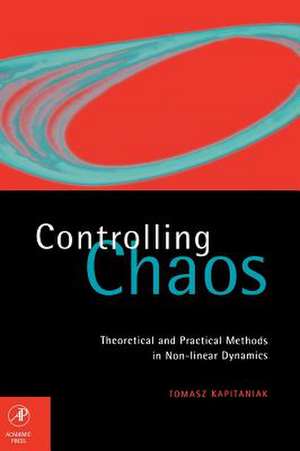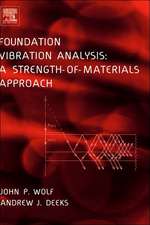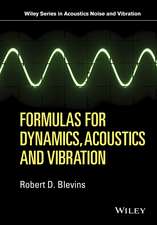Controlling Chaos: Theoretical and Practical Methods in Non-linear Dynamics
Autor Tomasz Kapitaniaken Limba Engleză Hardback – 18 iul 1996
* Uses easy examples which can be repeated by the reader both experimentally and numerically* The first book to present basic methods of controlling chaos* Includes reprinted papers representing fundamental contributions to the field* Discusses implementation of chaos controlling fundamentals as applied to practical problems
Preț: 511.98 lei
Preț vechi: 664.91 lei
-23% Nou
Puncte Express: 768
Preț estimativ în valută:
97.98€ • 101.52$ • 81.77£
97.98€ • 101.52$ • 81.77£
Carte tipărită la comandă
Preluare comenzi: 021 569.72.76
Specificații
ISBN-13: 9780123968401
ISBN-10: 0123968402
Pagini: 164
Dimensiuni: 152 x 229 x 14 mm
Greutate: 0.55 kg
Editura: ELSEVIER SCIENCE
ISBN-10: 0123968402
Pagini: 164
Dimensiuni: 152 x 229 x 14 mm
Greutate: 0.55 kg
Editura: ELSEVIER SCIENCE
Public țintă
Postgraduates and research workers in the fields of Aerospace, Civil, Mechanical, and Electrical Engineering, Applied Mathematics, Physics, and Meteorology.Cuprins
Part I: General Outlook: Introduction. Controlling Chaos Through Feedback: Ott-Grebogi-Yorke Method. Pyragass and Classical Control Methods. Controlling Chaos by Chaos. Controlling Chaos without Feedback: Control Through Operating Conditions. Control by System Design. Taming Chaos. Entrainment and Migration Control. Syhnchronization of Chaos: Pecora and Carrolls Approach. Synchronization by Continuous Control. Monotonic Synchronization. Practical Synchronization. Synchronization in Quasi-Hyperbolic Systems. Secure Communication. Engineering Implementations: Method Selection. Occasional Proportional Feedback Method. Sampled Input Waveform Method. Controlling Transient Behavior in Mechanical Systems.Further Reading. References. Part II: Selected Reprints: E. Ott, C. Grebogi, and Y.A. Yorke, Controlling Chaos. F.J. Romeiras, C. Grebogi, E. Ott, and W.P. Dayawansa, Controlling Chaotic Dynamical Systems. U. Dressler and G. Nitsche, Controlling Chaos Using Time Delay Coordinates. W.L. Ditto, S.W. Rausco, and M.L. Spano, Experimental Control of Chaos. T. Tel, Controlling Transient Chaos. T. Shinbrot, E. Ott, C. Grebogi, and Y.A. Yorke, Using Chaos to DirectTrajectories to Targets. K. Pyragas, Continuous Control of Chaos by Self-Controlling Feedback. E.A. Jackson, On the Control of Complex Dynamic Systems. L.M. Pecora and T.L. Carroll, Synchronization in Chaotic Systems. K. Pyragas,Predictable Chaos in Slightly Perturbed Unpredictable Chaotic Systems. K.M. Cuomo, and A.V. Oppenheim, Circuit Implementation of Synchronized Chaos with Applications to Communications. G. Perez and H.A. Cerdeira, Extracting Messages Masked byChaos. K. Kocarev, and U. Parlitz, General Approach for Chaotic Synchronization with Applications to Communication. Index. Color Plate Section.


















